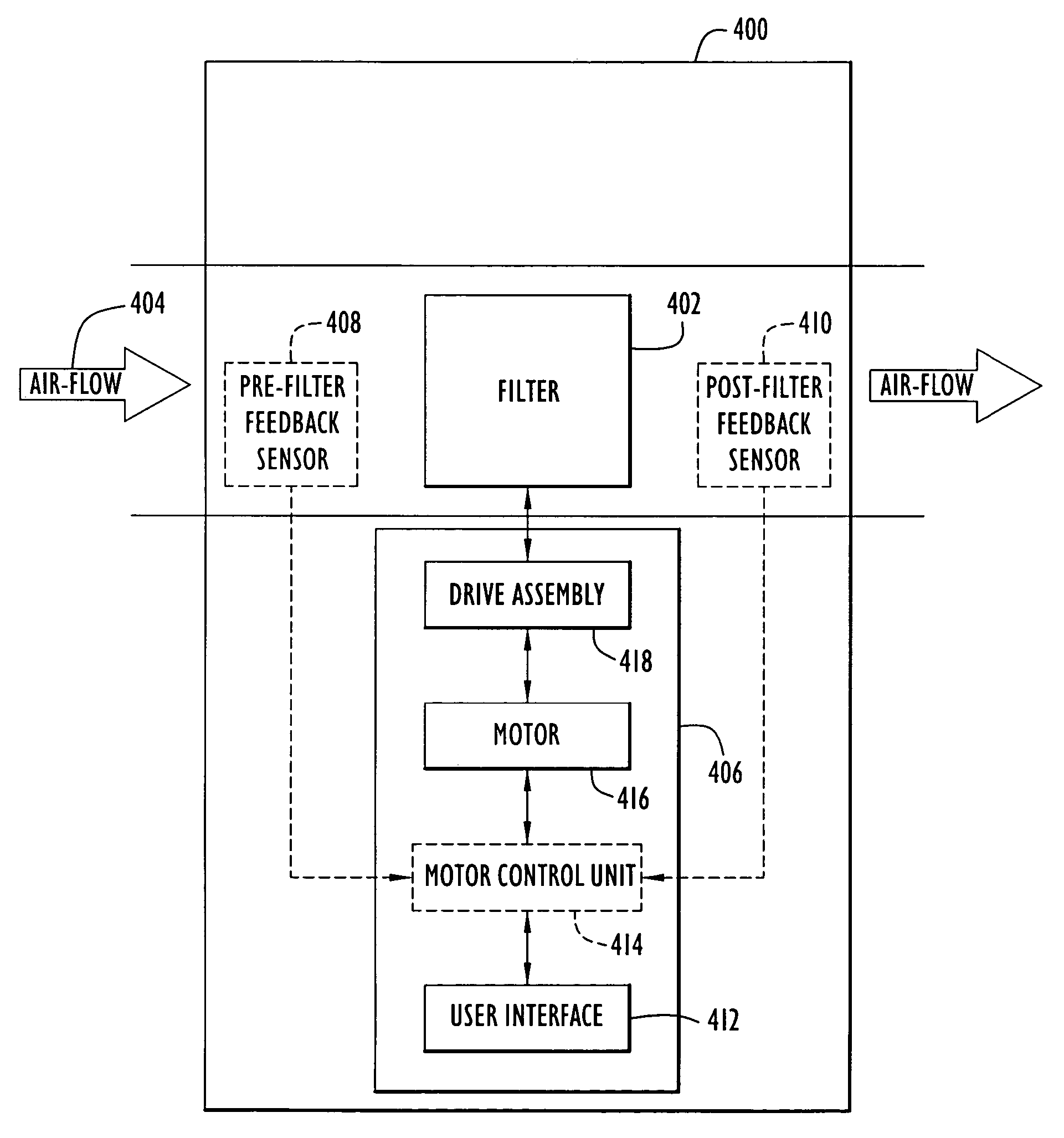Method and apparatus for filtering particulate matter from an air-flow
a technology of airflow and filtering method, applied in the field of filtration, can solve the problems of reducing the airflow through the filter, reducing the efficiency of the filter, and only capturing larger particles, and achieve the effect of reducing the back-pressure of the filter
- Summary
- Abstract
- Description
- Claims
- Application Information
AI Technical Summary
Benefits of technology
Problems solved by technology
Method used
Image
Examples
Embodiment Construction
[0040]FIG. 1A and FIG. 1B are diagrammatic views of a cylindrical bar filter and a cylindrical mesh filter, respectively, that may be used to filter air flowing within a channel, or duct. In such an embodiment, the filter is in the shape of a substantially hollow right cylinder with a diameter (D) and a cylinder height (H). As shown in FIG. 1A, cylindrical bar filter 102 may include a set of parallel bars 104 that connect points on the perimeter of circular base 106 with corresponding points upon circular base 108, thereby forming a right cylinder balanced about a central axis 110. Cylindrical bar filter 102 may be inserted directly within a rectangular air channel, or duct, with a length (L) that is only slightly greater (e.g., 0.5 cm) than cylinder height (H), and a width (W) that is only slightly greater (e.g., 0.5 cm) than the diameter (D) of cylindrical bar filter 102. Optionally, cylindrical bar filter 102 may be housed within a separate housing that may be connected within th...
PUM
| Property | Measurement | Unit |
|---|---|---|
| Size | aaaaa | aaaaa |
| Speed | aaaaa | aaaaa |
| Area | aaaaa | aaaaa |
Abstract
Description
Claims
Application Information
 Login to View More
Login to View More - R&D
- Intellectual Property
- Life Sciences
- Materials
- Tech Scout
- Unparalleled Data Quality
- Higher Quality Content
- 60% Fewer Hallucinations
Browse by: Latest US Patents, China's latest patents, Technical Efficacy Thesaurus, Application Domain, Technology Topic, Popular Technical Reports.
© 2025 PatSnap. All rights reserved.Legal|Privacy policy|Modern Slavery Act Transparency Statement|Sitemap|About US| Contact US: help@patsnap.com



